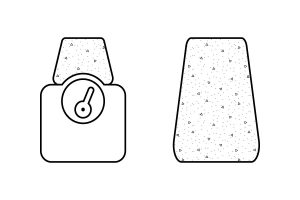Introduction
Building Commissioning is the process of inspecting, testing, and verifying different building systems performance against some sort of benchmark or ‘required’ goal. Essentially, this is the process to make sure the building performs as it should, while also making changes to the systems for improved operations and comfort. It typically also serves as the time for building engineers or owners to understand and learn how to operate and understand their building, in a sort of hand-off period.
Process
Building Commissioning is not always required in the process of constructing a building, and for most projects, is not something even on the services list provided by a contractor. If it has been included in a bidding requirement or services, it normally is one of the first things on the table when costs and VE discussions begin to happen.
It may sound at first blush that this process would be quick and relatively cheap, but it is quite the opposite. Building commissioning can take multiple days as the systems and buildings need to be tested in different environments (for example night vs day). This also typically means that the process cannot happen with an occupied space at the same time — potentially delaying client move-in.
This is the reason that it gets VE’d or removed from contracts often. It’s not just the cost & time, but also the timing. As these processes are generally the last thing you perform, right when a client wants to move in after months or years of waiting. This means that if the project has been delayed, or you already have tenants moving into the space immediately, the thought of having engineers and contractors continue to work in the space adjusting settings and taking measurements of things may not be a super realistic process or desire.
Benefits
However, you should always perform building commissioning if you can, the long term benefits far outweigh any sort of minor scheduling hiccups or couple week delay in opening a project.
You get what you paid for
The most critical component of how to sell the commissioning back to the owner is that it verifies that they are getting what they paid for. If you purchased a higher efficiency MEP equipment for any numerous reasons… whether lifespan, ROI, required by LEED, etc… the commissioning process will verify that the equipment is actually performing at its listed efficiency. A contractor/engineer is unable to simply install and walk-away; instead, they need to verify that they are delivering what they said they can. Many times this can uncover defects or issues that will be fixed at no cost to the owner.
Lifespan and ROI
Furthermore, equipment that is not running at maximum efficiency will mean more stress on the equipment as it works harder or more frequently, and that of course equates to more money spent on energy loss and inefficiencies. This is from an operator standpoint but also a tenant standpoint. Having the equipment run only when needed is crucial to maximizing the lifespan of the equipment as well as shortening the ROI for various investments. A simple example to think of is exterior lighting. Verifying it turns on/off as it should during dusk/dawn can save thousands of dollars a year in energy while further allowing bulb life to be maximized.
Operational Efficiency
Part of building commissioning is also about a proper hand-off from the contractors to the engineers and building maintenance crew on site. They will run through warranties, equipment operation, and general building performance expectations and operations.
Requirements LEED
Commissioning is a requirement for LEED certification. One of the benefits of LEED would be that if an owner gets to the stage where they want to VE this process, they would lose the LEED certification.
Examples of Building Commissioning
Lighting
Verifying light sensors are properly reading accurate light levels. This would involve taking light sensors and measuring light levels at appropriate benchmark elevations vs what the sensors are reading. If the lights are not as sensitive as they need to be, they might be leaving lights on when adequate sunlight is getting in, or perhaps are too sensitive and are turning off lights when they should still be left on.
Beyond being a monetary factor for the cost of electricity, improper light levels and room conditions will affect performance of workers, and have proven to affect things such as student test scores.
MEP Airflow
Going to different vents and measuring airflow and temperature out of the system. Making sure temperature isn’t too hot or too cold coming from the system will verify an efficient system where users do not turn up or down thermostats unnecessarily, including opening windows and self-regulating temperature. This may involve adjusting dampers, adding in dampers, or even adding or removing branch work depending on system performance.
Fenestration
Windows are becoming more connected to building systems as time goes on. This involves glass that can be tinted, automatic blinds, and even auto-opening and closing windows. Ensuring that these systems are appropriately connected to the building is critical to make sure you get your money’s worth as all these technologies carry an extremely high premium.






Leave a Reply
You must be logged in to post a comment.